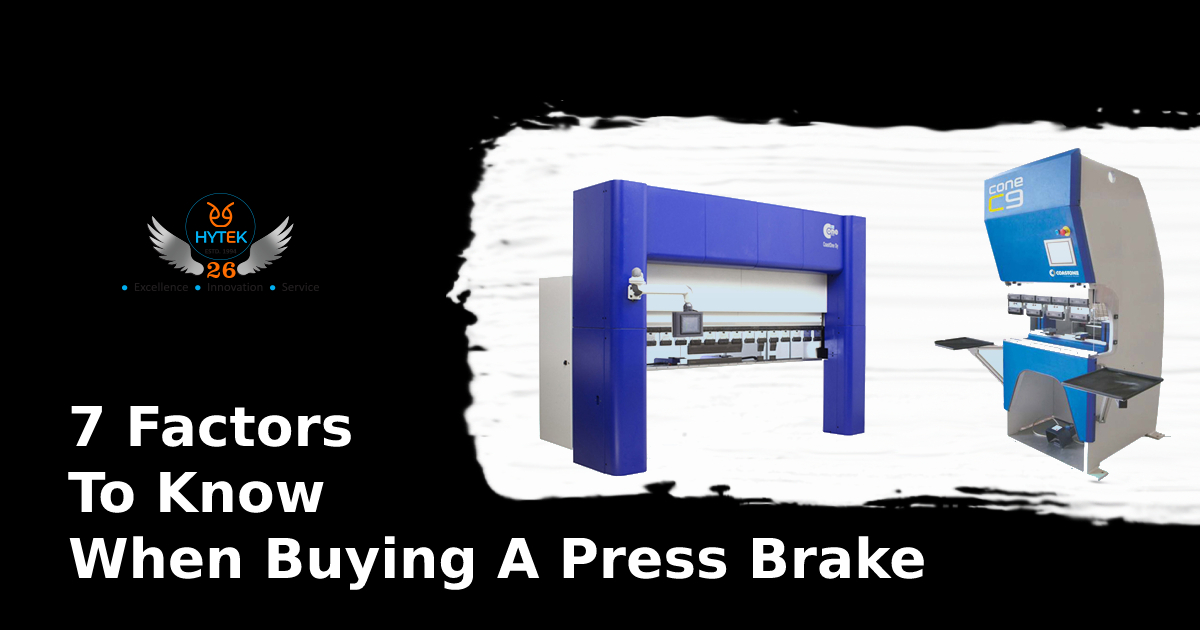7 Factors To Know When Buying A Press Brake
A press brake is a machine pressing tool for bending sheet and plate material, most commonly sheet metal. It forms predetermined bends by clamping the workpiece between a matching punch and die. Typically, two C-frames form the sides of the press brake, connected to a table at the bottom and on a movable beam at the top. The bottom tool is mounted on the table, with the top tool mounted on the upper beam.
The main 7 factors are;
-
Material Type & Thickness
The main factor to know when buying a press brake is the material type and its thickness. According to a buyer most probably he/she looks mainly at the material type and the quality of the product. Material type and its thickness is mainly ascertained to buy a product or service.
-
Maximum material length
The next main factor which influences buying a press brake is the maximum material length provided. What is the maximum material width you will need to bend and what the maximum flanges you will be bending. These two questions are critical in determining the overall bending length you will need on a press brake.
-
Complexity of Bends
If you're bending simple 90's you're perfectly suited for a simple CNC 2-Axis machine. However, if you're bending complex electronic enclosures, internal support brackets, etc that have complex and angled bends you’re likely suited for a much more sophisticated gaging system and control on your machine. Back gauges can be equipped from 1-6 axes and more with additional gauge fingers etc.
-
Accuracy of Bend
Accuracy on a press brake is a combination of handling many factors in the material you’re working with including material hardness, yield strength, and spring back. How the press brake is arranged determines how it handles a variety of material deviations and the final part accuracy.
-
Number of parts required per day
Whether you’re a small shop or a high production manufacturer, the number of parts required per day can determine not only how the press brake is equipped but how it’s loaded as well as possible. When buying a press brake, you need to know how quickly you can produce quality parts by hand or if automation is needed.
-
Number of part/ Tooling changeouts required per day
If you are running the same parts day in and out then you would likely not benefit from some of the enhanced tool handling features available on today's press brakes. However, if you are changing tooling out a day or more on your press brake, or plan too then you definitely need to consider the productivity enhancements that will be achieved with features like Hydraulic Ram Clamping and Die Clamping.
-
Press brake operator skill level
Lastly, when you’re buying a press brake you need to consider the skill level you have available to work with. Typically, you will find that the more powerful the control, the less skilled the operator needs to be. Yes, that is correct, the more powerful the control the less skill you need from your operator as the control does much more calculations for you. Controls, calculate for bend allowance, set pinch points, gage points, and bend sequences all automatically taking a ton of setup time off the operator or better yet, your lead fabricator.
Read the Concept of Press Brakes and its Advantages
Conclusion
It is clear that the factors to know when buying a press brake are clearly defined here. Hence according to the factors, it is easy to select the best press brake for the company for the smooth running of the business. Hytek Marketing provides the best quality press brakes for the smooth running of the business.

